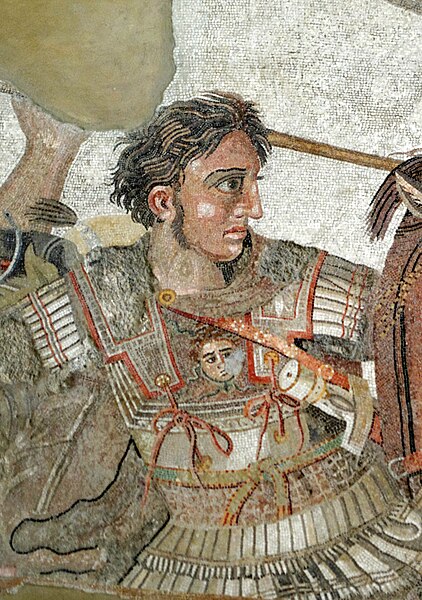Greco-Bactria was a Hellenistic-era Greek state, and along with the Indo-Greek Kingdom, the easternmost part of the Hellenistic world in Central Asia and the Indian subcontinent. It was founded c. 256 BC by the Seleucid satrap Diodotus I Soter and lasted until its fall c. 120 BC. It was ruled for most of its history by the Diodotid dynasty and Euthydemid dynasty.
Gold coin of Diodotus c. 245 BC. The Greek inscription reads: ΒΑΣΙΛΕΩΣ ΔΙΟΔΟΤΟΥ – "(of) King Diodotus".
Corinthian capital, found at Ai-Khanoum, 2nd century BC
Coin depicting the Greco-Bactrian king Euthydemus 230–200 BC. The Greek inscription reads: ΒΑΣΙΛΕΩΣ ΕΥΘΥΔΗΜΟΥ – "(of) King Euthydemus".
Bactrian phalera with military elephant carrying a howdah fortress manned by a soldier wearing a Macedonian helmet. 2nd century BCE, Hermitage Museum.
In classical antiquity, the Hellenistic period covers the time in Mediterranean history after Classical Greece, between the death of Alexander the Great in 323 BC and the death of Cleopatra VII, followed by the emergence of the Roman Empire, as signified by the Battle of Actium in 31 BC and the conquest of Ptolemaic Egypt the following year. The Ancient Greek word Hellas was gradually recognized as the name for Greece, from which the word Hellenistic was derived. "Hellenistic" is distinguished from "Hellenic" in that the latter refers to Greece itself, while the former encompasses all ancient territories under Greek influence, in particular the East after the conquests of Alexander the Great.
Hellenistic period
The Nike of Samothrace is considered one of the greatest masterpieces of Hellenistic art.
Alexander fighting the Persian king Darius III. From the Alexander Mosaic, Naples National Archaeological Museum.
Alexander's empire at the time of its maximum expansion.








